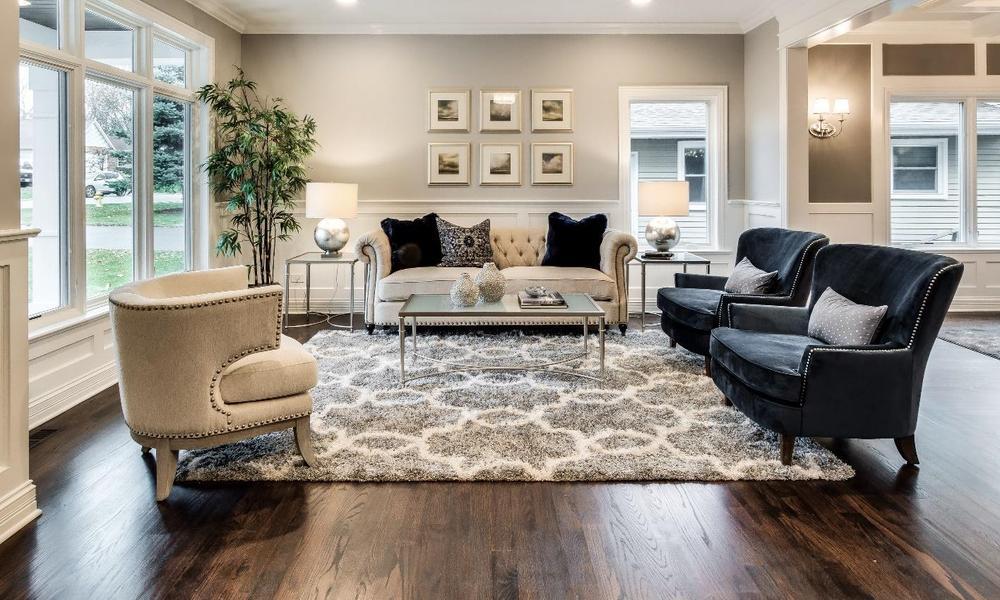Today’s real estate market is pretty competitive. That is why the art of home staging has emerged as a powerful tool for real estate agents and property owners alike. This process is the strategic process of preparing properties for sale by showcasing their best features and creating an inviting atmosphere that appeals to a wide range of potential buyers.
With its ability to transform a house into a desirable and welcoming home, this process has become an indispensable aspect of the modern property selling process.
What Is Home Staging?
Home staging is the practice of decorating and arranging a property in a way that maximizes its potential appeal to buyers. It involves the careful selection and placement of décor, furniture, and other accessories to create an aesthetically pleasing, as well as emotionally engaging environment.
The ultimate goal of this practice is to present a space that not only looks visually appealing but also allows buyers to envision themselves living in the property. Here are some reasons why property staging is important.
Click home.howstuffworks.com/real-estate/selling-home/house-selling.htm to find out more about how homes are sold.
Highlighting the Home’s Potential
This practice helps buyers see the full potential of the house by presenting it in its best possible position. A cluttered and empty space can make it hard for potential buyers to visualize how they would use the rooms effectively and efficiently. On the other hand, staging provides them with a clear picture of the house’s possibilities.
Creating Emotional Connections
A well-staged house can evoke emotions and a sense of connection with possible buyers. By creating an inviting and warm atmosphere, this thing taps into the purchaser’s emotions, making them more likely to envision the structure as their future home.
Stand Out in the Market
In a competitive real estate market, staging sets a home apart from the rest. Online listings with stage photos are more likely to grab the attention of potential purchasers, increasing the chances of scheduling showings.
Minimizing Flaws
This practice can downplay any shortcomings or flaws a house may have. By emphasizing the positive aspects and minimizing the negative ones, staging can make even a dated or small space appear more attractive.
How to Transform the Property Into a Home?
This process is a powerful technique that can significantly enhance the appeal of the structure to potential customers. By showcasing its best features and creating an inviting atmosphere, people can increase their chances of selling their houses faster and at a higher price.
If people are ready to take on the challenge of staging their house themselves, these steps will help them transform their property into a welcoming and irresistible space.
Declutter and Depersonalize
The first and most important step in home staging is to depersonalize and declutter the space. Remove personal items like excessive decorations, family photos, and items that may distract potential purchasers from envisioning themselves living in the house. Clearing clutter creates an open and clean canvas, allowing customers to focus on the property’s features.

Repair and Deep Clean
A well-maintained and clean structure is more likely to attract clients. Thoroughly clean every room, paying close attention to floors, surfaces, and windows. Repair visible damages like leaky faucets, chipped paint, or broken tiles. A well-maintained structure conveys a sense of value and care to potential customers.
Define Each Room’s Purpose
To maximize the appeal of the structure, people should make sure that each room has a definite purpose. Avoid ambiguous spaces that could confuse potential customers. Set up rooms according to their intended function, whether it be an office, bedroom, or guest room. Clear spaces and appropriate furniture placement can make rooms feel more spacious and functional.
Neutral Color Palette
Neutral colors are universally appealing to the eyes and can provide a blank canvas for possible customers to imagine their own decor. Owners need to consider repainting walls in light, neutral tones like light gray, soft pastels, or beige. Neutral colors also create a harmonious and cohesive flow throughout the structure.
Enhance Curb Appeal
First impressions matter, and the structure’s exterior is the first thing customers will see. Boost the curb appeal of the house by keeping the front yard clean and tidy, adding potted flowers or plants, and repainting the front door if necessary. A well-maintained exterior can set a positive tone for the rest of the structure.
Furniture Selection and Arrangement
Strategically choose furniture that can complement the size and style of each room. Consider using rental furniture or borrowing pieces to help you create an inviting and cohesive atmosphere. Arrange them to create a smooth flow and highlight the structure’s best features, like a fireplace or a scenic view.
Accessorize With Style
Add tasteful accessories to help you elevate the visual appeal of the staged rooms. Decorative items like throw pillows, artwork, and area rugs can add personality and warmth to the space. But be mindful of not over decorating, as simplicity usually speaks louder than extravagance.
Let There Be Light
Maximize the use of natural light to make rooms feel welcoming and bright. Remove heavy blinds and curtains that obstruct light, and consider adding mirrors placed strategically to reflect light and create a sense of openness.
Focus on Details
Pay close attention to the finer details, as they can make a huge difference. Make sure all light bulbs are working, tidy up cables and cords to maintain a neat appearance, and replace worn-out hardware and fixtures.
Final Walkthrough
Before listing the house, do a final walkthrough with a critical eye. Owners should consider seeking feedback from family members or friends to get an objective perspective. They need to make any necessary adjustments to make sure that their home is presented in its best possible light.

